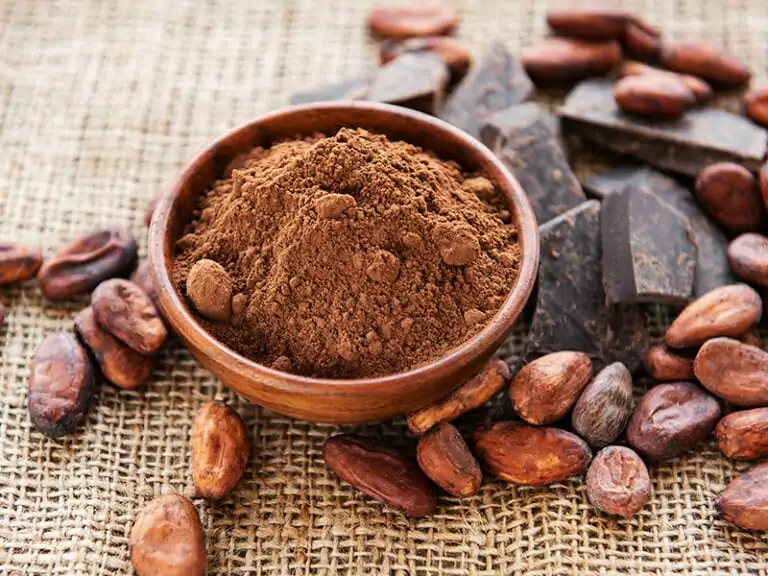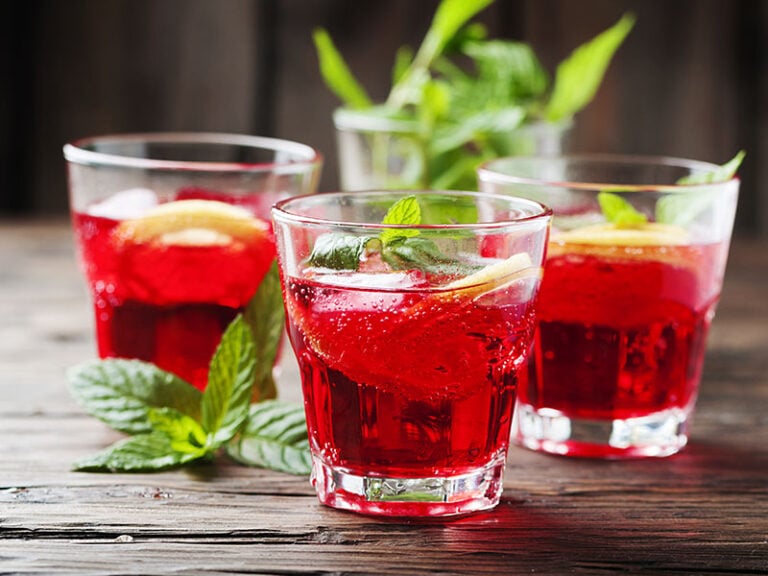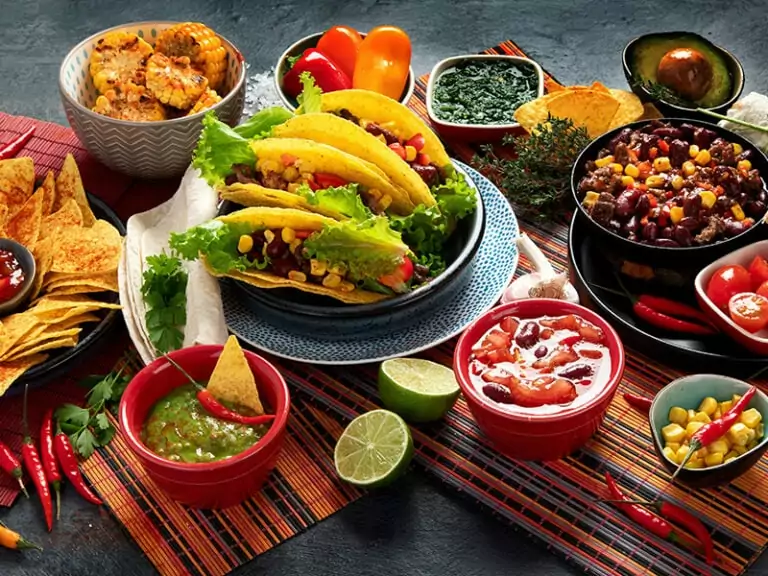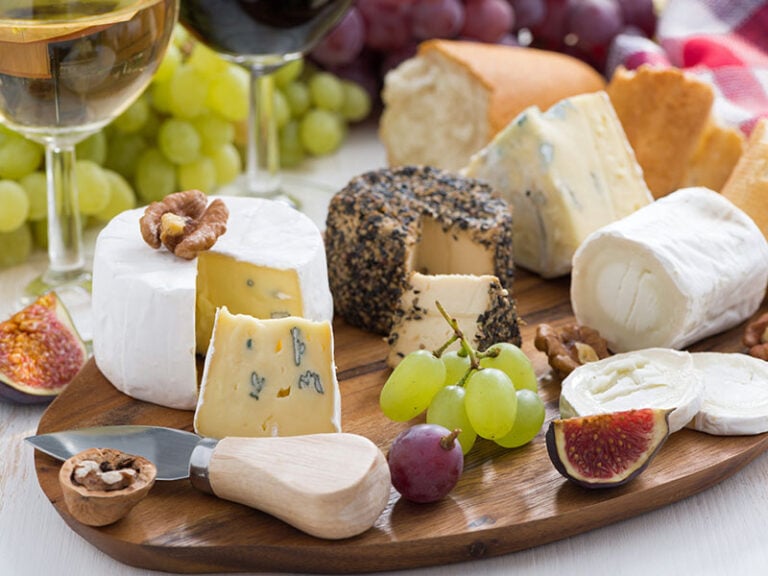The debate between skirt steak vs. flank steak has never heated down. These two beef cuts possess excellent flavors and distinct textures that make up their reputation. However, it’s hard to differentiate between these two cuts since they have many similar traits.
In this post, I will compare skirt steak with flank steak regarding its flavors, textures, nutrition, and costs to help you pick your favorite cuts. There are also helpful cooking tips and information relating to the two steaks that you’ll find interesting.
To avoid wasting your time, let’s jump straight into the post.
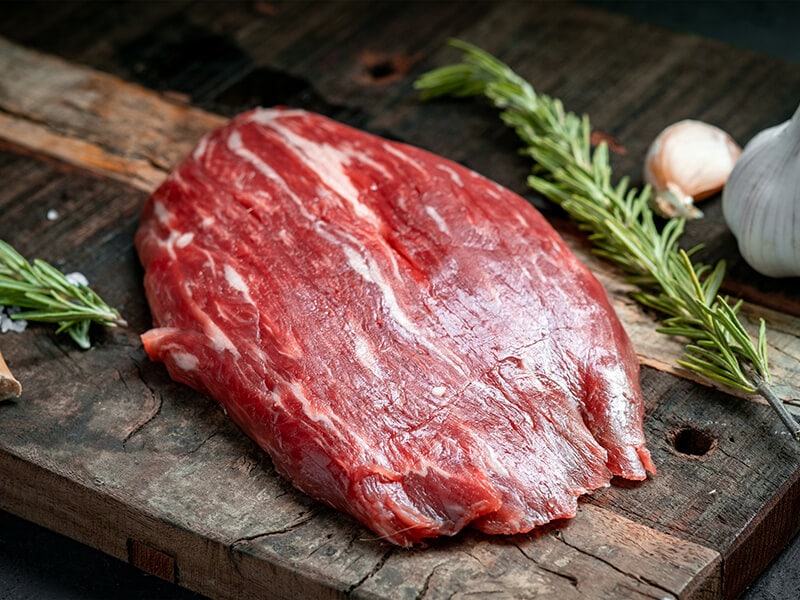
An Overview Of Skirt Steak
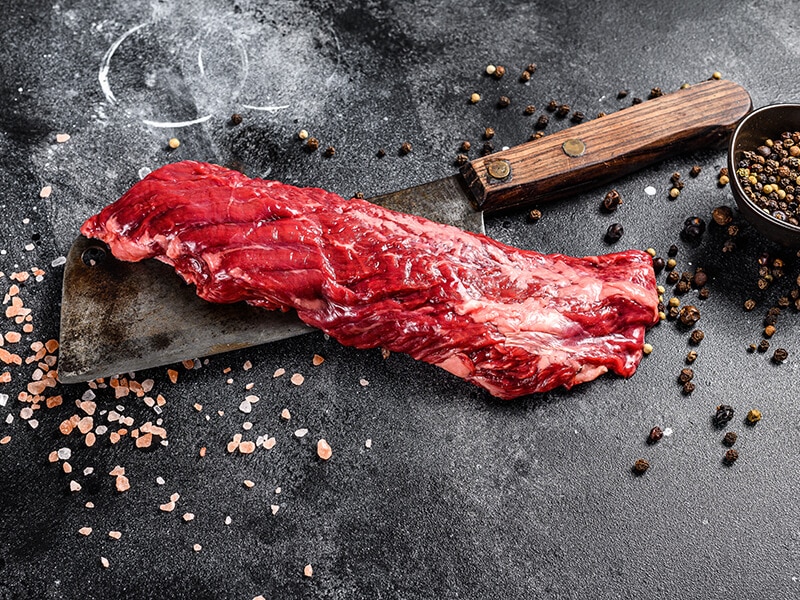
Also known as Fajita steak or Philadelphia steak, skirt steak originated from the cow’s plate primal located under the rib. Due to the high content of muscles and tough fibers, skirt steak is commonly tough and chewier than the other cuts.
Depending on its location, the cut is divided into two main types: inside and outside skirt steak. The outside skirt steak is typically more tender and thicker, making it a more popular choice for cooking and commercial kitchen’ uses.
Though the texture of skirt steak is a little tough, its high marbling content brings an intensely beefy flavor with a rich buttery undertone. This cut can be slow-cooked or seared briefly over high heat and still delivers excellent results.
Check out the main differences between outside and inside skirt steaks!
An Overview Of Flank Steak
Flank steak, sometimes called London Broil, or Jiffy steak, comes from the abdominal area underneath the cow’s lean loin, which concentrates a lot of collagen muscles. Therefore, the cut features a lean yet chewy texture, which can still deliver excellent flavors when cooked properly.
You don’t need to trim flank steak since it has a lower fat content. The flavorful beefy flavor and lean texture of flank steak make it an excellent ingredient for recipes that involve searing and cooking with high heat.
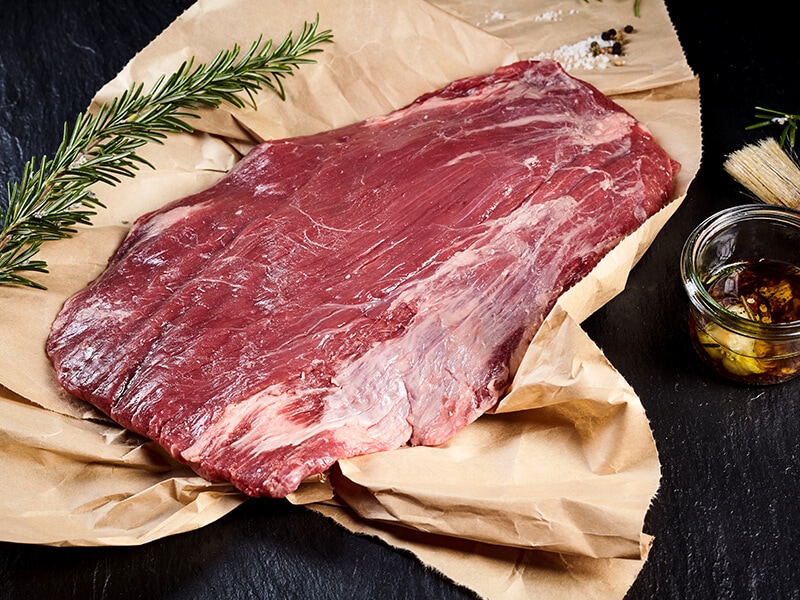
Flank Steak Vs. Skirt Steak: What Do They Have In Common?
It’s undeniable that flank and skirt steak have many similar traits, from the texture, and cooking methods, to flavors. Before dwelling on the differences between flank and skirt steak, let’s first check out their similarities.
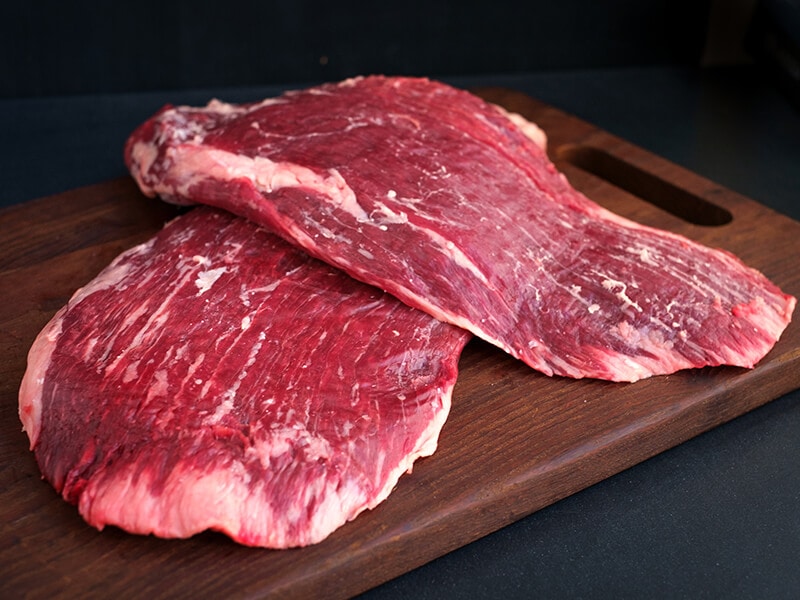
The Texture
The side abdominal area near the thigh and the cow’s abdomen, where the skirt and flank steak come from, are all lean and tough areas. These two areas contain the muscles that stay active a lot in the cow’s lifespan, thus containing tough fibers and muscular joints.
As two weight-bearing and hard-working muscles, these two areas also contain higher amounts of collagen. Collagen increase is harder to break down via cooking, making a cut tougher to chew or slice. (1)
Therefore, skirt and flank steak have a lean yet chewy texture. In addition, the skirt and flank will get even chewier when you cook them for a long.
Therefore, you must tenderize them properly using the meat mallet or marinating methods and cook them at the proper temperature to improve their tenderness.
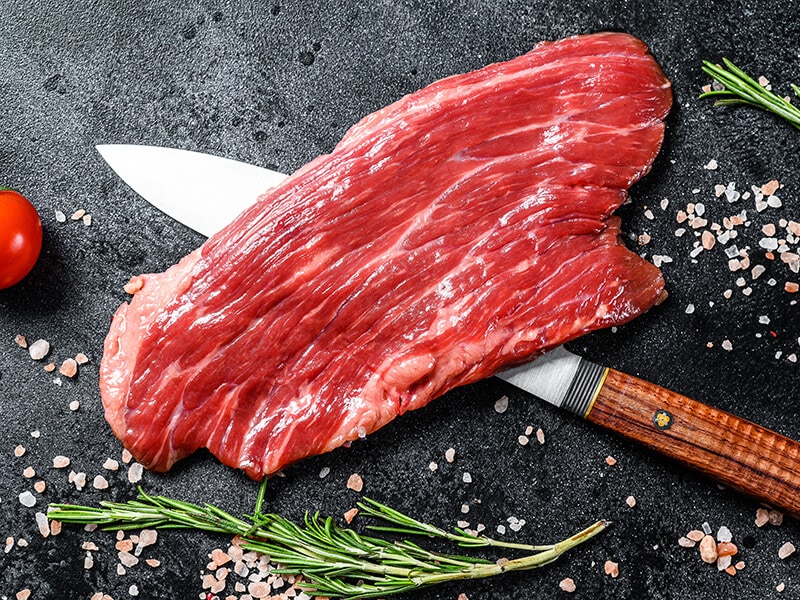
Excellent For Cooking Over High Heat
Due to their relatively low-fat contents and tough textures, you should only sear or grill skirt and flank steak over high heat in a short time to achieve the best results. Over-cooking will drain the steak’s juice, making it tough, dry, and less appetizing.
Therefore, medium and medium-rare doneness are the most suitable options for flank and skirt steak. Also, tenderizing methods like marinating and pounding the steak with a meat mallet are necessary to reduce its toughness.
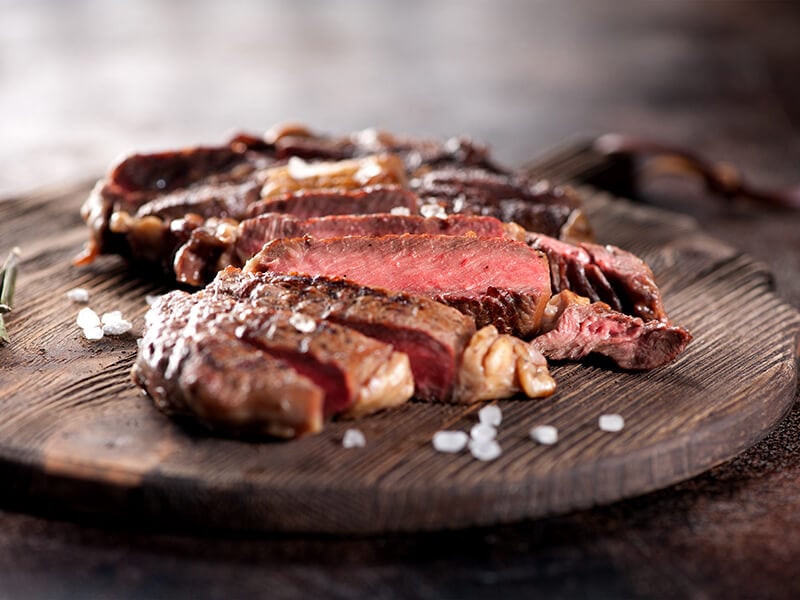
Versatility
The differences in the flavors of skirt and flank steak are very subtle. They can both feature intense beefy flavors, which apply to many recipes like the London broil, beef fajitas, carne asada tacos, or steak salad.
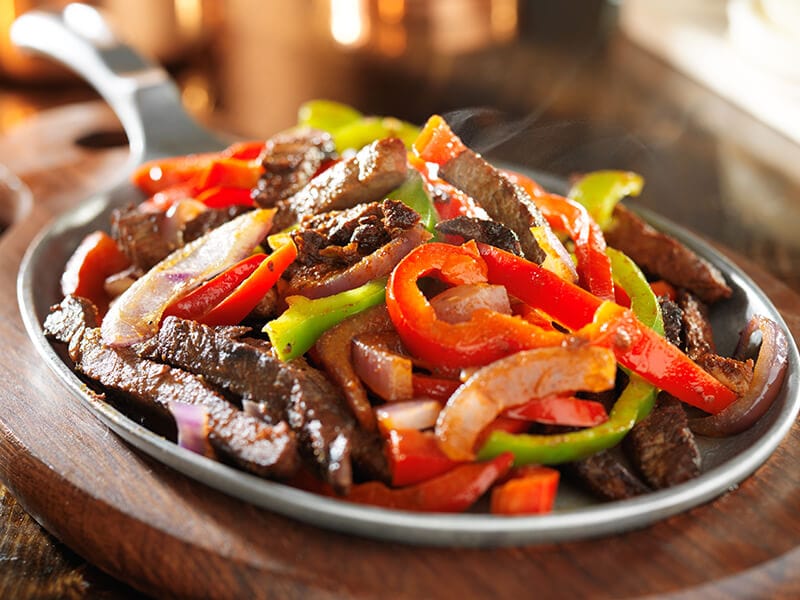
The Core Differences Between Skirt Steak Vs. Flank Steak
Though flank steak and skirt steak can be used interchangeably in various recipes, there are some noticeable differences regarding their flavors, textures, and cooking methods. Check out the sections below, and I will show you all the details.
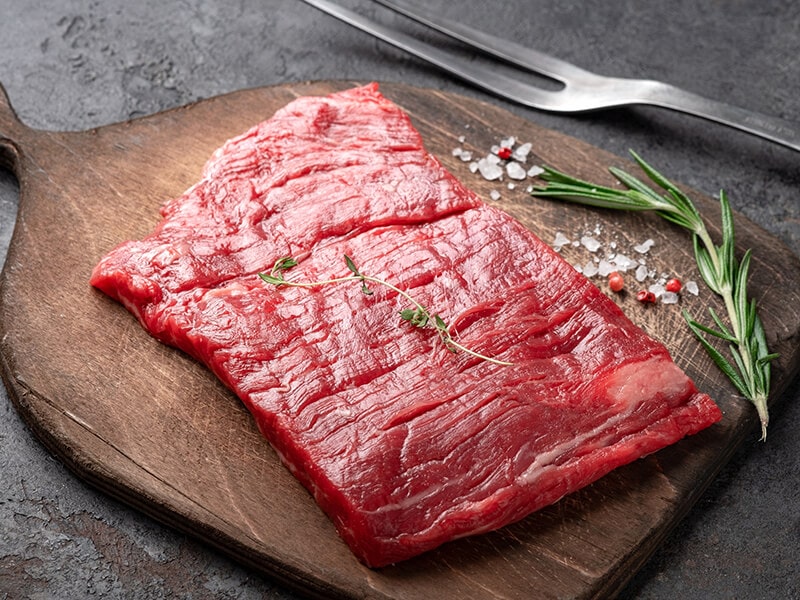
Origin Of The Cut
The most apparent differences between these two cuts lie in their positions on the cow’s body. The skirt steak comes from the two separate muscles inside the abdominal cavity and the chest, lying below the ribs.
Meanwhile, flank steak originates from the cow’s abdominal muscles, which are next to the skirt steak area. These muscles can lie in front of the hind legs and beneath the loin area.
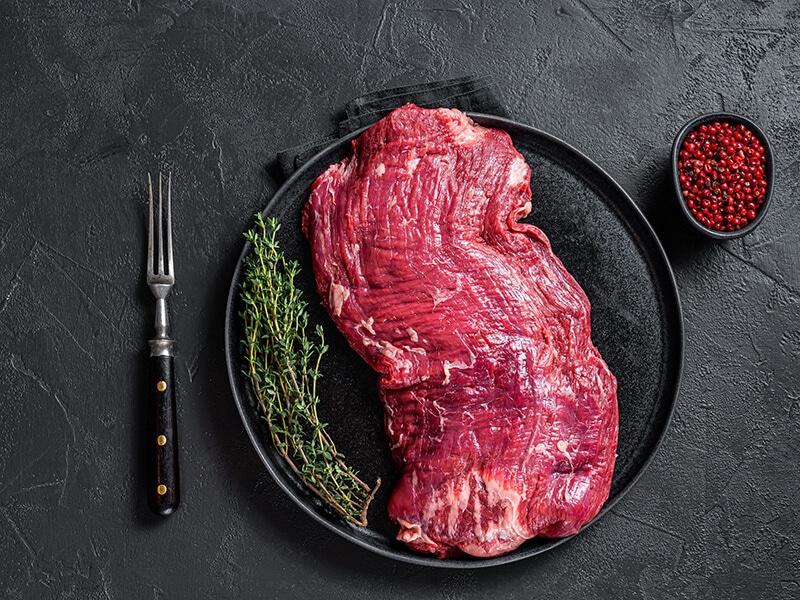
The Size And Appearance Of The Cut
A typical cut of flank steak features ¾ to one inch in thickness and tapers down to the thinner end (around ½ inches). The cut is very lean, with little marbling and a reddish color. You will commonly see more fatty parts on the thinner end of the cut.
On the other hand, the skirt steak cut has a long, thin, and narrower appearance than the flank. The outside skirt steak is typically ½ to 1-inch thick and four to three inches wide, while the inside cut is just half as thick but has a wider size (around 5 to 7 inches).
When you slice flank steak, the cuts come in wide and flat shapes, while skirt steak features longer and thinner cuts.
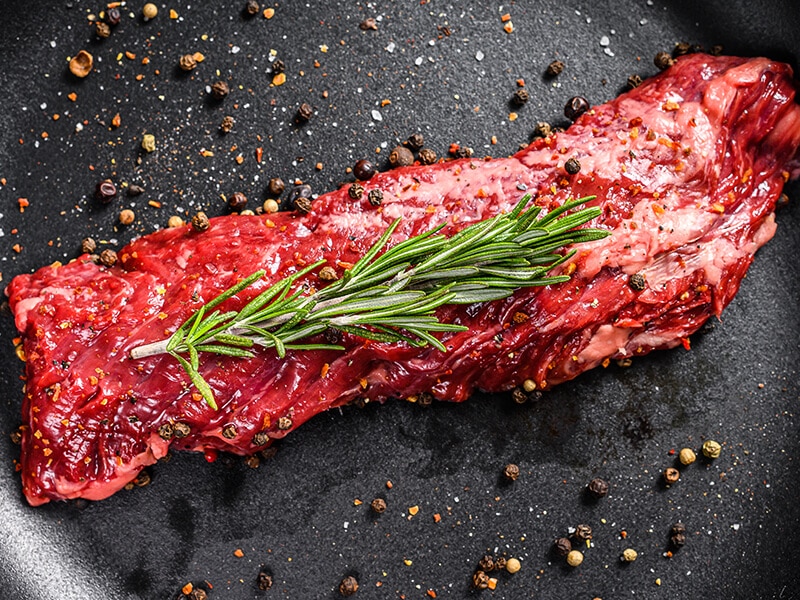
The Cut Texture
Although two cuts contain a lot of muscle fibers, the concentration of the tight woven grain is denser on the flank than on the skirt cut. Meanwhile, skirt steak contains a higher amount of fibrous grain.
For this reason, flank steak is a little chewier and tougher than skirt steak, while the skirt is juicier and fattier as it has more connective tissues. In addition, the outside skirt steak cuts are typically more tender than the inside cuts.
In addition, skirt steak is a better ingredient for marinating, stir-frying, and slow-cooking recipes. Its texture reacts well to acidic substances like vinegar or soy sauce, while these marinating materials cannot penetrate flank steak as easily.
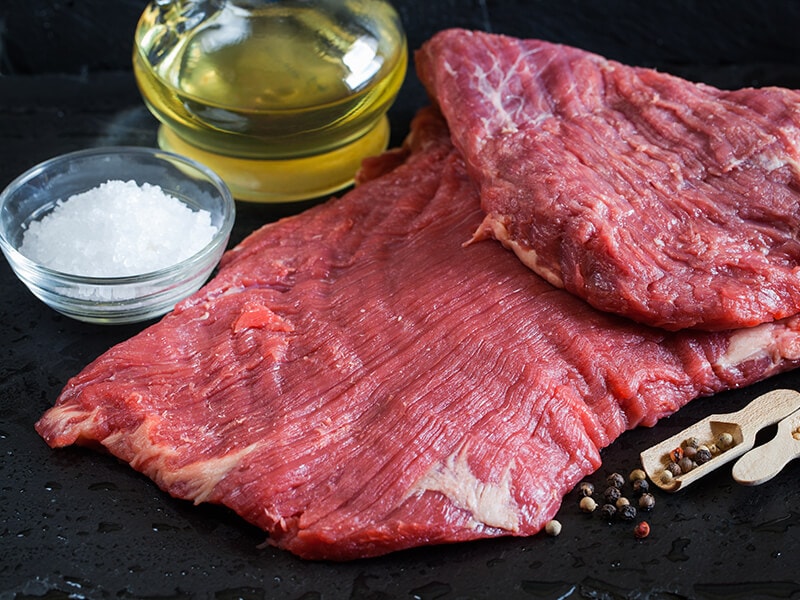
The Cut’s Flavors
Since skirt steak has higher fat content and marbling concentration, it brings a more powerful fatty undertone and juicy flavors. Though the two cuts are both flavorful, the beefy taste of a piece of skirt steak is stronger due to its high coarse muscle fibers.
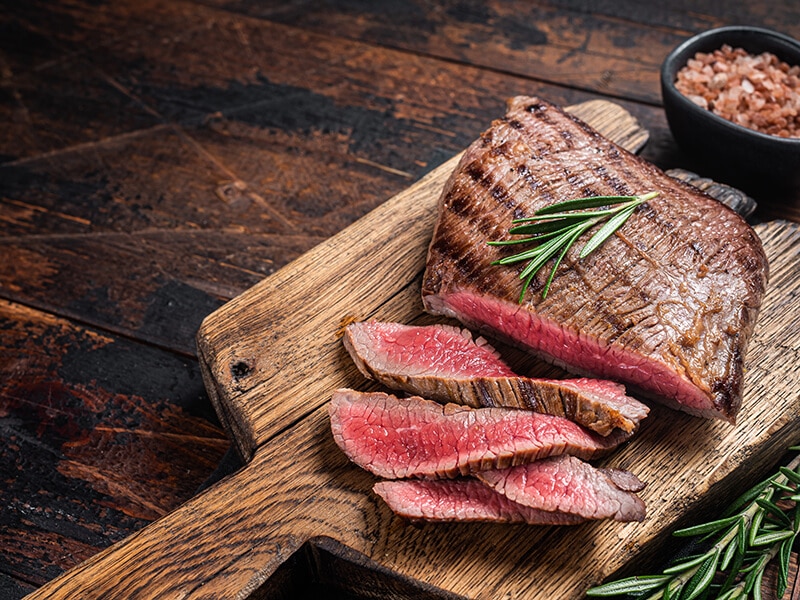
Nutrient Content
A 3-ounce serving of flank steak can supply your body with 162 calories, 6 grams of fat, and 3 grams of saturated fat. Meanwhile, the numbers for a 3-ounce serving of skirt are 220 calories, 12 grams of fat, and 5 grams of saturated fat.
According to this result, it’s apparent that skirt steak contains more nutrients and a higher fat content than flank. These two cuts are also a rich source of micronutrients like vitamins, phosphorus, zinc, and selenium. (2)
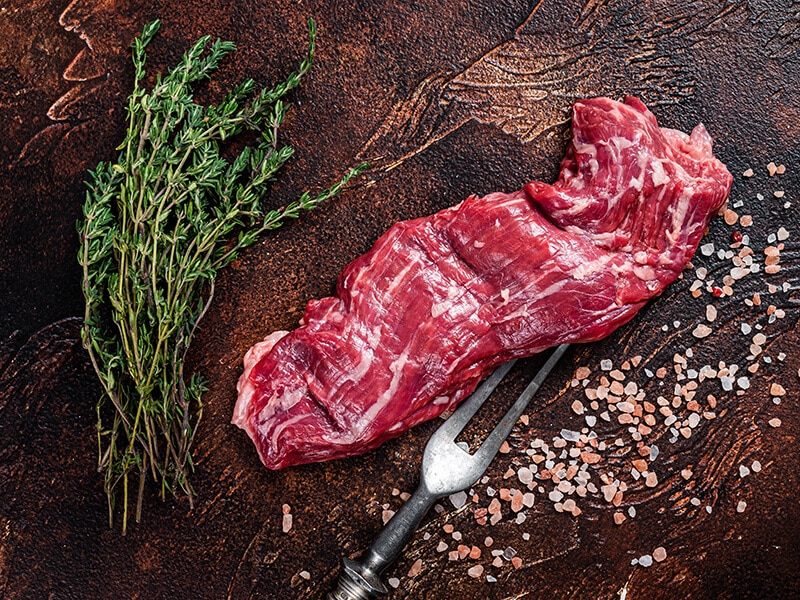
Cooking Time And Method
Both flank steak and skirt steak require tenderizing methods like marinating or pounding with the meat mallet to break down their long grains tough and muscle fibers. The ideal doneness levels of these two cuts are medium and medium rare.
You should sear each side of skirt steak for around three minutes, while the ideal time for flank is five minutes on each side.
The reason why you need to sear each side of the flank longer is that it features a tougher texture. Therefore, it would be best to sear each side of a flank steak for 5 minutes (1 to 2 minutes longer than the skirt steak).
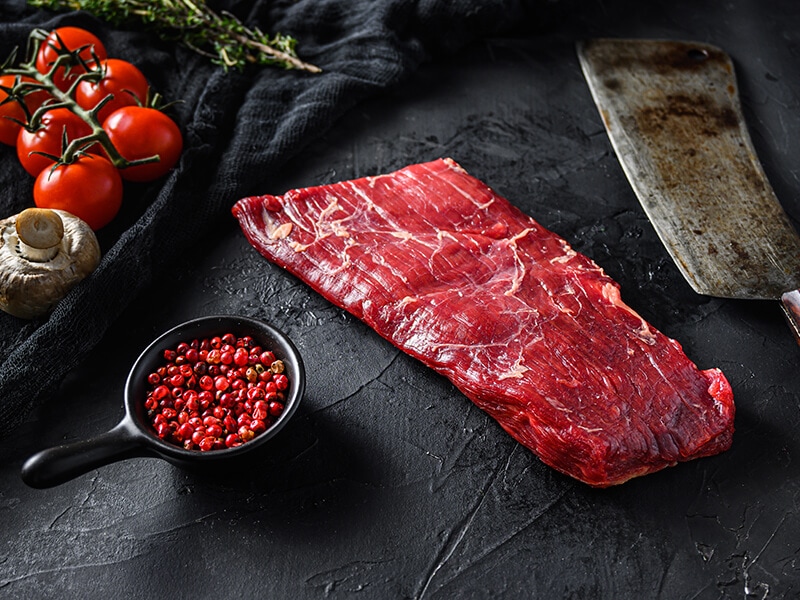
Price And Availability
Regarding the prices of these two cuts, skirt steak is typically more expensive than flank. Currently, one pound of skirt steak sold in meat and grocery stores costs significantly higher than one pound of flank steak.
Since flank features a fibrous, tough, and lean texture, it is not the ideal ingredient for many recipes. Therefore, flank steak isn’t the most sought-after cut to put on the grill, leading to its lower price range.
The price may vary depending on the location and time, but the flank is significantly cheaper than the skirt on average. Due to the cheaper price ranges, flank steak makes a nutritious and affordable meal for meat lovers.
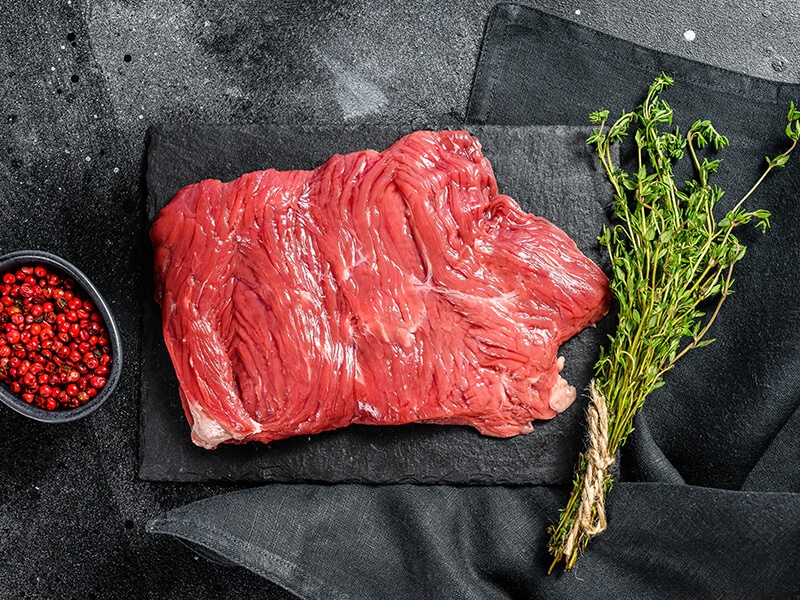
The Best Way To Cut Flank Steak And Skirt Steak
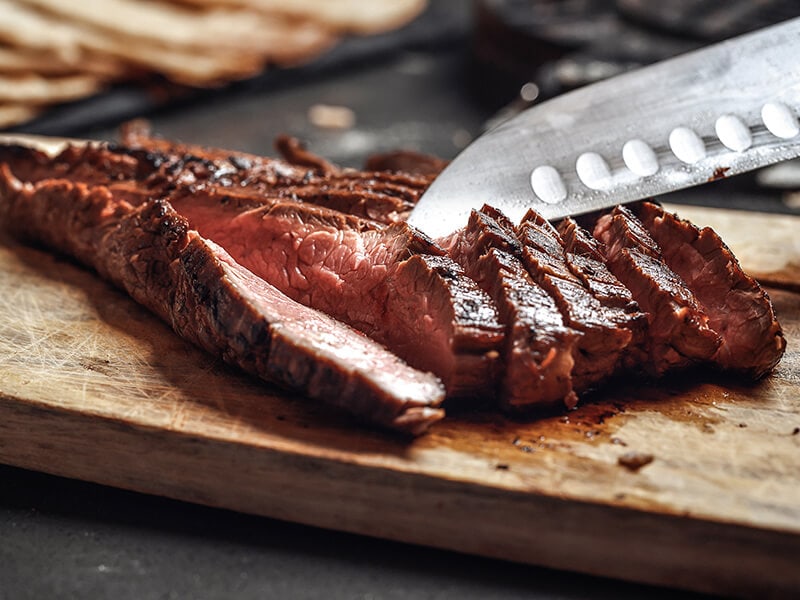
Flank and skirt steaks possess a tough and chewy texture because they contain a lot of muscle fibers. Therefore, you should slice against these fiber grains when cutting skirt and flank steaks to decrease their toughness.
The grains indicate the tough and long fibers running on the steak surface. If a cut features the grain running lengthwise, you should slice it at the crosswise angle and vice versa. This technique will shorten the tough fiber and make your cut more tender to chew. (3)
Here are some helpful and easy tips to make your steak more tender!
How To Tell If A Cut Is Flank Or Skirt Steak
You can spot the differences between flank and skirt steak based on the cut’s size, appearance, and texture. At the meat store, a flank steak cut should come in a flat, wide, and thin shape with the meat grains running along its length.
Meanwhile, skirt steak cuts are typically narrower, rougher, and skinnier, featuring the grain running crosswise. You can also notice the higher density of the woven grain on a flank steak compared to a skirt steak.
Regarding the texture, the cuts with more marbling and more visible fatty parts are most likely skirt steaks. Meanwhile, flank steak cuts are lean and typically lighter than its counterpart.
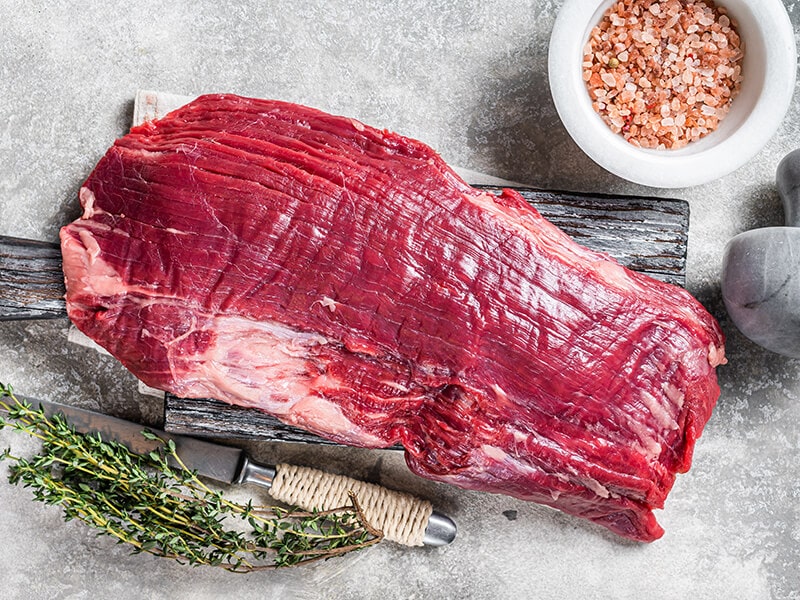
Delicious Flank Steak Recipes You Should Try Out
Despite the natural beefy and satisfying tastes of flank, you must choose suitable recipes to make the most out of its flavors. Here are some of my favorite recipes for turning flank steak into super simple and delicious meals.
1. Garlic Butter Skillet Flank Steak
I want to introduce you to the garlic butter skillet flank steak, a gluten-free, delicious, and easy recipe that can refill your stomach after long working hours. All you need is a high-quality cut of flank steak and some delicious garlic butter sauce.
The garlicky undertone of minced garlic combined with the spicy hint of ground black pepper will bring the flank steak flavors to another level. To make this recipe even fancier, you can add a little dry white wine to incorporate the flavors.
2. Stuffed Flank Steak
Imagine a long and lean piece of flank steak rolled up and stuffed with mozzarella cheese, vegetables, and sun-dried tomatoes before putting it on the grill. This stuffed flank steak is the first recipe you want to try out when the craving for meat kicks in.
The mozzarella cheese coating not only makes the steak texture more tender but also gives it an amazing cheesy aroma. The natural sweetness of sun-dried tomato mixed with the freshness and herbal taste of spinach and olive oil turns this steak into a heavenly dish.
This recipe requires patience, a sharp knife, and decent cooking skills to deliver the highest results. The most challenging part lies in slicing the steak cut. Ensure that you cut close to the flank steak’s center while its two sides feature similar thickness.
The stuffed flank steak’s flavors and looks are out of this world. Here is how you prepare it.
3. Asian Grilled Flank Steak
A super tender, well-cooked, and juicy steak that takes only fifteen minutes to prepare. It’s hard to find a more convenient and excellent way to enjoy your flank steak than this Asian grilled method.
This recipe involves marinating to break down its tough texture and gives the steak more flavor. The marinate mixture is simple with soy sauce, brown sugar, and toasted sesame oil. If possible, you should marinate the meat one night before grilling.
Both charcoal grill and traditional gas grill work with this Asian grilled flank steak, which you can consider based on the available tools. The recipe calls for 8 to 10 minutes of searing, but you can increase the cooking times for a more well-done steak texture.
Don’t Miss Out On This Excellent Skirt Steak Recipe
A plate of filling and tender grilled skirt steak will give you and your family a great time. These simple and amazing recipes will unravel the finest way to prepare your delicious skirt steak cut.
4. Grilled Skirt Steak
Grilling has always been the most popular way to prepare skirt steak. It brings the steak a filling and smoky undertone while letting its natural beefy taste shine. You can prepare a tasty and nutritious meal with a few simple seasonings and a cut of high-quality skirts.
You can marinate the steak in the fridge for more than 30 minutes to increase its tenderness. Remember to defrost the steak for at least 30 minutes prior to grilling. This grilled steak salad will pair best with chimichurri, but you can use your favorite sauce if preferred.
This instruction will help you make the perfect grilled skirt steak at home!
5. Gochujang-Marinated Skirt Steak
I was stunned by the buttery, filling, and tasty flavors of this Gochujang skirt steak when trying this recipe for the first time. If you are a fan of Gochujang sauce, this excellent Gochujang-marinated skirt steak is a must-try.
The Gochujang sauce (Korean hot pepper paste) combines chili powder, salt, glutinous rice, and soybean, giving your steak a complex combination of spicy, salty, fermented, and sweet flavors.
Meanwhile, the seasoned rice vinegar and olive oil help break down the tough fibers and make the steak melt in your mouth like butter. You can serve the grilled steak with tortillas and season it with more Gochujang sauce or pick onions for richer flavors.
6. Grilled Skirt Steak Skewers
The smoking-hot and delicious grilled skirt steak skewers never get obsolete among the fun and simple methods for making steak. If you want to throw an intimate and satisfying bbq party with your friends and family, try out this recipe.
The long, tender, and thin texture of skirt steak makes it a perfect ingredient for the skewers. However, you would want to marinate the skirt cuts with honey, ginger, red wine vinegar, and pepper flakes to increase their tenderness.
The natural sweetness of honey mixed with the strong spicy smell of ginger and the spiciness of pepper flavors will combine like magic in this recipe. Just put the steak on direct heat, and your filling will be ready in three to four minutes.
FAQs
You may wonder if flank or skirt steak is a better choice for your favorite dish. The sections below will bring more helpful information relating to these two cuts. Check them out to discover more!
Skirt Steak Vs. Flank Steak: It’s Up To Your Taste And Preferences
I hope the comparisons and information provided can help you decide on the winner between skirt steak vs. flank steak. In summary, skirt steak features better flavors, a more tender texture, and a higher nutrient content than flank.
However, it doesn’t mean that the flank is a low-quality cut. Flank steak possesses pretty identical flavors and textures, making it an excellent substitute for skirt steak in various recipes.
If you don’t like the fatty taste of skirt steak and prefer a cheaper ingredient, flank steak is a perfect ingredient. If you agree with my opinions, don’t hesitate to like, share the post and leave your contributing comments. I always appreciate your time and ideas!
References
- Exploratorium.edu. What Makes Meat Juicy And Tender.
- Healthline.com. Beef 101: Nutrient Facts And Health Effects.
- Dorsey.edu. 2017. What’s The Grain.

